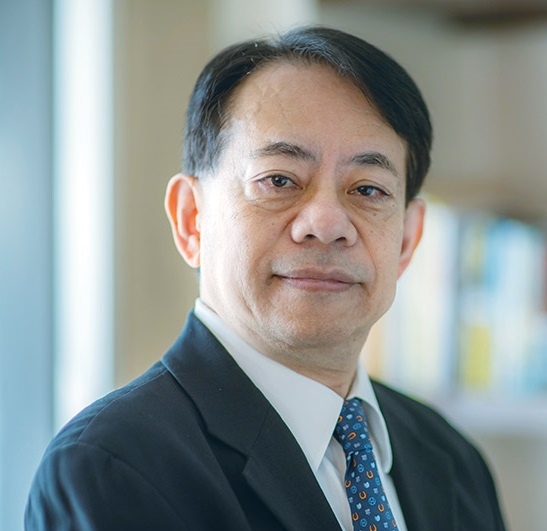Seizing bigger growth opportunities across ASEAN
 |
| Masatsugu Asakawa - President Asian Development Bank |
The first challenge is the Russia-Ukraine conflict, which has sent shockwaves across the global economy. ASEAN’s direct exposure to Russia and Ukraine through trade and investment appears limited. But with the price of oil surging to its highest levels since 2008, inflation is heating up. ASEAN’s net oil importers face substantial challenges with rising import bills. Food security and fragile supply chains are at greater risk too.
The second challenge is increasing interest rates in the United States, which are complicating the inflation battle amid heightened uncertainties. Widening interest rate differentials between ASEAN economies and the US and a shift in investor confidence could trigger a sudden reversal in capital flows, currency depreciation, and financial instability.
To sustain momentum for recovery, the region must stay vigilant and prepare for collective action to avert regional financial instability. In particular, authorities must carefully manage the combined effects of higher oil prices, US interest rate hikes, and the phasing out of fiscal stimulus.
Against this backdrop, ASEAN policymakers face three important policy priorities: strengthening regional cooperation to ensure a strong recovery; enhancing domestic resource mobilisation; and scaling up investment for green and inclusive growth. Regional cooperation can pave the path to a sustained and resilient recovery.
Strong regional trade and investment gave ASEAN a buffer during the global slowdown in trade and economic activity. The Regional Comprehensive Economic Partnership Agreement, which became effective early this year, is expected to expand this buffer.
The Asian Development Bank (ADB) will remain a reliable partner for regional economies in this area by providing trade finance, technical assistance, and knowledge solutions.
Deepening our local currency bond and capital markets is also critical. The ADB is supporting this through the ASEAN+3 Asian Bond Markets Initiative. It aims to nurture local currency bond markets as an alternative source of funding to foreign-currency denominated bank loans to alleviate the currency and maturity mismatches in the region’s financing for investment and reduce the risk of financial vulnerability.
We also support the development and issuance of green, social, and sustainability bonds to help governments invest in environmental sustainability, climate change mitigation and adaptation, and resilience. ASEAN’s efforts to strengthen food and energy security through regional cooperation, bolster regional health security, and strengthen disease surveillance mechanisms are crucial to mitigate risks and maintain sustainability.
A second priority is efficient domestic resource mobilisation. This is important to restore fiscal sustainability to maintain post-pandemic recovery and finance efforts to achieve the UN’s Sustainable Development Goals. ASEAN has room for improvement here due to its comparatively low tax revenue mobilisation. Several bloc members have strengthened their tax administration systems through digital solutions. We are working with economies to simplify processes for taxpayers that can enhance voluntary compliance and improve tax policy formulation.
We know that international tax cooperation is key to combatting tax avoidance and evasion. To promote this through knowledge sharing and coordination on tax policy and administration, we launched the Asia-Pacific Tax Hub. The third priority is scaling up investment in quality, climate-resilient infrastructure. Asia-Pacific is vulnerable to some of the most destructive effects of climate change, and these are expected to worsen. At the same time, our region is the source of more than 50 per cent of annual global greenhouse gas emissions. We need to recognise that the battle against climate change will be won or lost in this region.
The ADB’s ambition is to deliver $100 billion in cumulative climate financing from 2019 to 2030, including $34 billion for adaptation projects, to help the region’s response to the climate challenge.
The ASEAN Catalytic Green Financing Facility, which is owned by all ASEAN members and managed with the ADB, is supporting the development and financing of green infrastructure projects. It has mobilised $2 billion in public and private resources with support from nine partners, including co-financing from the EU, Italy, United Kingdom, and the Green Climate Fund under the Green Recovery Platform launched at COP26. The facility helps reduce risks in green investment and attract private capital by providing loans to cover high initial capital costs and grants to support governments as they identify and prepare commercially viable green infrastructure projects.
The Energy Transition Mechanism, or ETM, is another innovative programme launched by Indonesia, the Philippines, and the ADB last year. The ETM seeks to catalyse private capital and accelerate the transition from coal to clean energy in ASEAN. It aims to retire coal-fired power plants early; scale up clean, renewable energy solutions; and ensure that the transition is affordable.
ETM will provide low-cost financing by combining concessional public finance, private sector investment, and resources from philanthropies. This innovative mechanism has the potential to become the largest carbon reduction model in the world.
As ASEAN’s recovery from the pandemic moves into high gear, regional cooperation initiatives will remain critical to managing growing challenges and seizing new opportunities to build a stronger future.
What the stars mean:
★ Poor ★ ★ Promising ★★★ Good ★★★★ Very good ★★★★★ Exceptional
 Tag:
Tag:
Related Contents
Latest News
More News
- Main drivers for Vietnam’s digital economy future (December 03, 2025 | 11:35)
- Pivotal stage of growth paves way for rise in M&As (December 03, 2025 | 10:00)
- Positive projections for M&A interest from Thailand (December 03, 2025 | 09:40)
- Manifesting the first line of defence in cybersecurity (December 03, 2025 | 09:00)
- The transformational role AI can play in accounting arena (December 03, 2025 | 08:00)
- Unlocking 5G-AI potential in Singapore (December 03, 2025 | 08:00)
- Data-driven strategies vital for a fast-evolving nation (December 02, 2025 | 09:41)
- Policy to practice: how Vietnam can lead the region (November 26, 2025 | 16:03)
- Mobilising private capital at scale vital for climate battle (November 26, 2025 | 15:36)
- VILAF and Yoon & Yang launch Vietnam - Korea Practice Unit (November 26, 2025 | 15:16)























 Mobile Version
Mobile Version